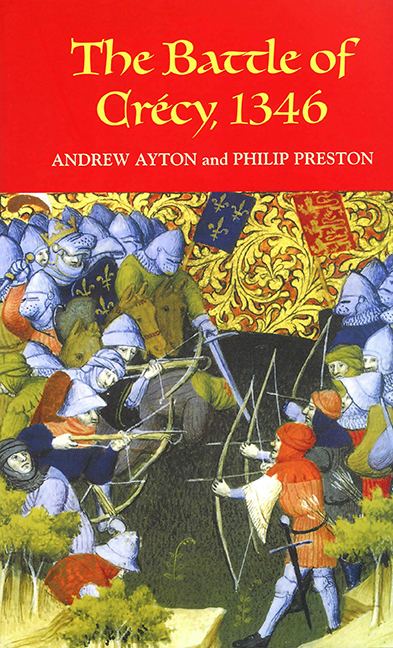2 - The Crécy Campaign
from The Campaign
Published online by Cambridge University Press: 25 October 2017
Summary
From La Hougue to Crécy: The strategic plan
Why did a major pitched battle take place in August 1346 at Crécy-en-Ponthieu? The question has two elements, concerning time and place. The significance of the ‘place’ of battle, the immediate locality and the region, will be examined later in this chapter; but at this stage it should be noted that, prior to August 1346, Ponthieu had felt little of the impact of the war. The county had been occupied, it seems without resistance, in 1337 when Philip VI confiscated the king of England's continental lands. Since then there had been no land-based operations in this part of France. From 1337 to 1345 English expeditions had been focused on the Low Countries (specifically Flanders, Artois and Hainault), Aquitaine and Brittany. As we have seen, several of those campaigns had witnessed stand-offs, but no pitched battles, between major field armies led by the protagonist kings. In July 1346 the English king returned to the fray and on this occasion Philip VI accepted battle. This prompts a number of questions. What was different about the circumstances of the campaign in July–August 1346? Had Philip simply been forced to accept battle by political pressure that had grown with each successive stand-off? Or did he genuinely believe that he had a decisive advantage in August 1346: an advantage of sufficient proportions to overcome the Vegetian caution that had been a feature of his earlier confrontations with Edward III? Or was his willingness to engage on that fateful August evening due to a loss of sang-froid: had he been outwitted and simply lost control? Was he the prey rather than the hunter? As we shall see, each of these questions is pertinent to an understanding of why the battle took place, but the main emphasis of the discussion that follows will be on the intentions and actions of Edward III. It will be argued that his strategy during the summer of 1346 was innovative in a number of important respects.
One striking difference about the campaign of July–August 1346 concerns the area over which it was fought. King Edward landed in the Cotentin peninsula and marched eastwards across Normandy, a region of France that had witnessed no previous fighting, apart from coastal raids.
- Type
- Chapter
- Information
- The Battle of Crécy, 1346 , pp. 35 - 108Publisher: Boydell & BrewerPrint publication year: 2005

